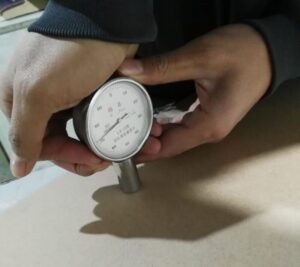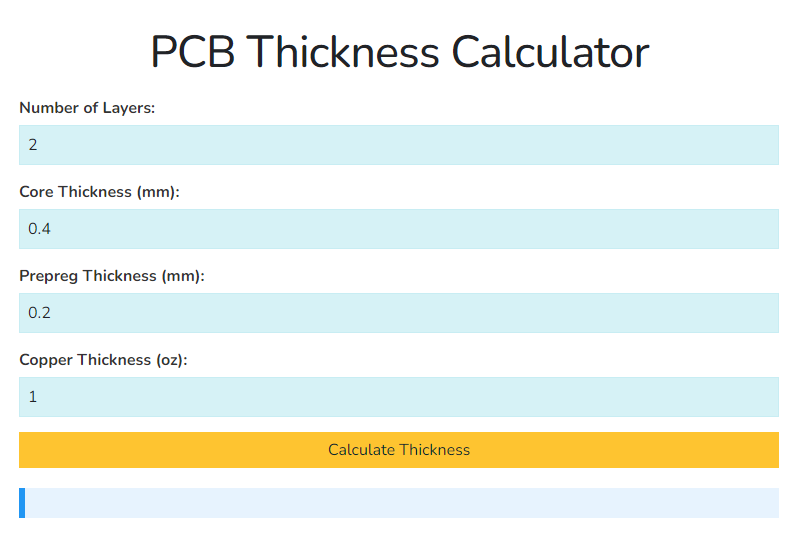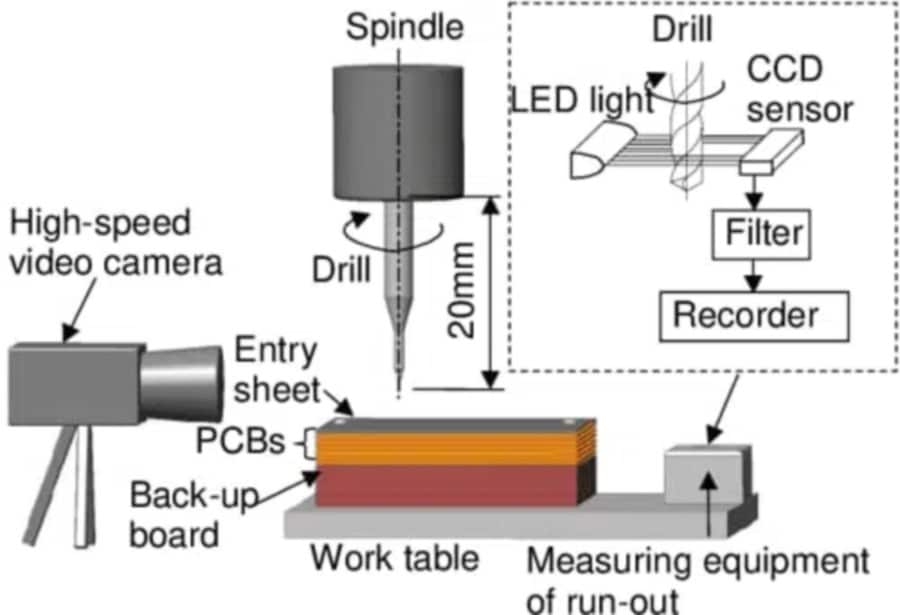Reliable Wood Backup Boards for PCB Drilling – HDF Material Supplier
What are Wood Backup Boards for PCB Drilling?
Wood fiber backup boards are specialized materials used in the PCB drilling process, designed to enhance drilling performance and protect both the PCB and the drilling equipment. These boards are tailored to meet specific requirements such as density, hardness, thickness, and tolerances.
If you’re diving into the world of PCB drilling, you’ve probably heard about wood backup boards. These boards are super handy when you’re working on your printed circuit board projects. They act as a backup for your drill bits, ensuring you get clean holes without those pesky burrs. Made from high density wood fiber board or HDF, these boards offer a great balance of thickness and flatness, making them a popular choice in the industry. You can find manufacturers in places like Shenzhen and Guangdong, where they export to North America, Africa, and beyond. If you’re looking for a good supplier, just contact us for some samples and pricing options.
wood backup material technical data
- Thickness: Compliance with international standards ensures reliability.
- Available in 2.0 mm and 2.4 mm.
- Thickness Tolerance:
- Tolerance of ±0.15 mm.
- Density:
- High Density (HD): ≥ 830 kg/m³
- Super High Density (SHD): ≥ 880 kg/m³
- Super Super High Density (SSHD): ≥ 950 kg/m³
- Hardness:
- HD: 72 ± 3 Shore D.
- Warp Resistance:
- Warpage ≤ 0.6% of diagonal.
- Standard Size (inches):
- Available sizes include:
- 37″ x 49″
- 41″ x 49″
- 43″ x 49″
- 74″ x 49″
- 82″ x 49″
- 86″ x 49″
- Customized sizes are available, typically requiring a minimum order quantity of 100 m³, but can be combined with other customers to meet this minimum.
- Available sizes include:
- Size Tolerance:
- Tolerance of ±3 mm.
Applications and Advantages of High Density Wood Backup Board:
Factory Supplied wood fiber backup is put under the PCB while drilling.
1. Ecnomic choice and recyclable with good performance.
2. Its good hardness and density help for keeping good quality of the hole wall while drilling PCBs, as well protecting the drill bit.
3. Good material with smaller impact of climate change on the warpage.
Standard Packaging of High Density Wood Backup Board:
Stanard seaworthy export packing, plywood pallets with protection.
Lead time:
7 work days for standard specification after deposit received.
Benefits of Using Wood Backup Boards
Utilizing wood backup boards in various applications offers numerous advantages, particularly in the context of enhancing the durability and performance of coatings. These boards serve as a supportive layer that allows for a consistent finish when applying a coat of material, thus ensuring a high-quality outcome. Furthermore, when sourced from a reputable Chinese manufacturer, such as a leading China manufacturer with a main focus on sustainable practices, these products can be both economically advantageous and environmentally friendly.
Moreover, the use of wood as a back-up material is favored in many factories due to its ability to withstand varying conditions while providing structural integrity. This is particularly important in settings that require materials to perform continuously under different pressures. By integrating wood backup boards into production processes, companies can significantly enhance the overall quality of their output, thereby achieving greater customer satisfaction and operational efficiency.
Key Features of High-Density Fiberboard (HDF) Material for PCB Drilling
- Density
- Typical density ranges from 830 kg/m³ to 880 kg/m³, with some variations reaching up to 950 kg/m³.
- Higher density contributes to strength and durability, minimizing wear and tear.
- Hardness
- Hardness rating of 70 ± 3.
- High hardness enhances precision during drilling and reduces drill bit deviation.
- Moisture Resistance
- Superior moisture resistance compared to MDF.
- Suitable for environments with fluctuating humidity, preventing degradation or warping.
- Warp Resistance
- Excellent dimensional stability; less susceptible to warping.
- Warp characteristics primarily influenced by fiber type and ratio; different suppliers may offer varying properties and prices.
- Processing methods for UV boards and melamine laminate boards require different HDF specifications, necessitating careful selection.
- Surface Finish
- Very smooth surface finish ideal for detailed millwork and coatings.
- Allows for excellent paint adhesion and precise cuts during machining.
- Environmental Considerations
- Can be produced from recycled wood fibers, making it an eco-friendly option.
- Biodegradable, reducing environmental impact at the end of its lifecycle.
- Cost Efficiency
- Typically used in PCB applications requiring holes larger than 0.3 mm.
- Offers enhanced durability and performance, leading to long-term savings through reduced maintenance and replacement needs.
These features collectively make HDF a reliable choice for PCB drilling applications, contributing to improved performance and product quality in electronic manufacturing processes.
Comparing Wood Fiber Board vs. Melamine Backup Boards
When evaluating the characteristics of wood fiber boards and melamine backing boards, it is essential to consider their unique properties and applications.
Wood Fiber Board Characteristics
- Composition: The PCB drilling wood fiber board is primarily made from pine fibers, achieving a hardness of 70D ± 3 and a density of either 830 or 880 kg/m³.
- Applications: Different applications require specific performance characteristics. For example, melamine backing boards used for laminating fiberboards must withstand high temperatures (up to 170°C) and pressures exceeding 10 tons. This necessitates uniformity in the fibers, with minimal impurities, and strict control of moisture content to prevent issues like bubbling or particle formation during lamination.
- Surface Quality: For applications involving water-based paint or UV coatings, the surface hardness and flatness are achieved through the reaction of paint molecules. Therefore, the requirements for wood fiber boards are relatively lower, allowing for mixed fibers to reduce costs, which is reflected in a price difference of 200-300 RMB per cubic meter.
- High-Density Options: To achieve a hardness increase of 1-2 points, ultra-high-density fiberboards with a density of 950 kg/m³ are available.
Melamine Backing Board Characteristics
- Composition: The melamine backing board is composed of medium-density fiberboard (MDF) combined with melamine resin paper.
- Performance: This combination significantly enhances surface hardness and flatness, achieving a hardness rating of 80D ± 3. It can largely replace phenolic boards while costing only half as much, making it widely adopted in various applications.
Drilling Performance Comparison
In terms of drilling performance, the ranking is as follows:
- Melamine Board > UV Backing Board > Water-Based Paint Backing Board > High-Density Fiberboard
How to Ensure Quality Delivery of Wood Backup Boards?
To ensure the quality delivery of wood backup boards, it is imperative to establish rigorous standards throughout the production process. First and foremost, sourcing high-quality materials is crucial; this involves selecting wood that meets specific compliance standards regarding durability and environmental sustainability. Furthermore, employing advanced manufacturing techniques can significantly enhance the structural integrity of the boards, reducing the likelihood of defects.
In addition, regular inspections and testing should be implemented to monitor the quality at various stages of production. This includes assessing moisture content and visual inspections for any signs of warping or damage. Establishing a robust feedback loop with suppliers can also aid in identifying potential issues early on, thereby ensuring timely interventions.
Moreover, training personnel on best practices for handling and packaging wood backup boards is essential. Proper ventilation during storage and transport can mitigate the risk of moisture accumulation, ensuring that the boards arrive at their destination in optimal condition.
What is the Price Range for Wood Backup Boards?
- Average Price: The price for wood backup boards is approximately 2600 RMB/m³ for ex-works pricing.
- Pallet Load:
- Each pallet can hold 250 pieces of wood backup boards.
- A 20-foot container (1*20gp) can accommodate 24 pallets.
This pricing structure indicates the cost-effectiveness of purchasing wood backup boards in bulk, especially for manufacturers looking to optimize their supply chain and reduce shipping costs.
Cost Factors for Wood Backup Boards
When considering the cost of wood backup boards, several factors influence the final price. Here are the key cost factors based on the provided search results:
- Material Type:
- Different types of wood and density levels (e.g., HD, SHD, SSHD) affect pricing. Higher density materials generally cost more due to their enhanced properties.
- Thickness:
- The thickness of the boards (e.g., 2.0 mm, 2.4 mm) can impact the price, with thicker boards typically being more expensive.
- Size and Customization:
- Standard sizes (e.g., 37″ x 49″, 41″ x 49″) are generally more cost-effective than custom sizes. Customized orders may require a minimum purchase volume (e.g., 100 m³), which can affect pricing.
- Production and Processing Costs:
- The method of production, including any treatments or finishes applied to the wood, will influence costs. For example, UV treatment or melamine lamination may add to the price.
- Warpage and Quality Control:
- Boards with lower warpage rates (≤0.6% of diagonal) may be priced higher due to their superior quality and stability.
- Shipping and Handling:
- Delivery costs can vary significantly based on location and shipping method. Standard seaworthy export packing may add to overall costs.
- Quantity Purchased:
- Bulk purchases often lead to discounts. For example, a pallet load containing 250 pieces can provide economies of scale.
- Market Conditions:
- Fluctuations in wood prices due to supply chain issues or demand changes can impact overall pricing.
How to Ensure Quality in Wood Backup Boards?
Ensuring quality in wood backup boards involves implementing a series of quality control measures throughout the manufacturing process. Here are the key elements:
Quality Control Measures for Backup Boards
- Raw Material Inspection:
- Conduct thorough inspections of wood logs or boards for defects such as cracks, knots, and insect damage.
- Ensure that only high-quality wood is selected for production to maintain the integrity of the final product.
- Testing for Density and Thickness:
- Density Testing: Use a density meter to measure the density of the boards, ensuring it meets specified standards (e.g., HD: ≥830 kg/m³).
- Thickness Measurement: Employ calipers or micrometers to measure board thickness, ensuring it adheres to the specified tolerances (e.g., ±0.15 mm).
- Hardness Testing:
- Utilize a durometer (hardness tester) to measure surface hardness, ensuring it meets required specifications (e.g., HD: 72 ± 3 Shore D).
- Warpage Assessment:
- Measure warpage using a straight edge or specialized measuring tools to ensure it remains within acceptable limits (e.g., ≤0.6% of diagonal).
- Assess factors affecting warpage, such as fiber type and ratio, and be aware of variations among suppliers.
Identifying Quality Issues in Wood Fiber Boards
- Visual Inspection:
- Regularly conduct visual inspections for defects such as black spots, watermarks, or other imperfections that can affect the board’s performance and appearance.
- Moisture Content Control:
- Monitor moisture content during production and storage to prevent warping and ensure dimensional stability.
- Certification and Testing:
- Implement certification processes to ensure compliance with industry standards (e.g., ISO 9001) for quality management systems.
- Conduct periodic testing of finished products to verify that they meet performance specifications.
Continuous Improvement
- Feedback Loop:
- Establish a system for collecting feedback from customers regarding product performance and quality.
- Use this feedback to identify areas for improvement in manufacturing processes.
- Training and Development:
- Regularly train staff on quality control procedures and best practices to enhance their ability to identify defects and ensure high-quality production.




